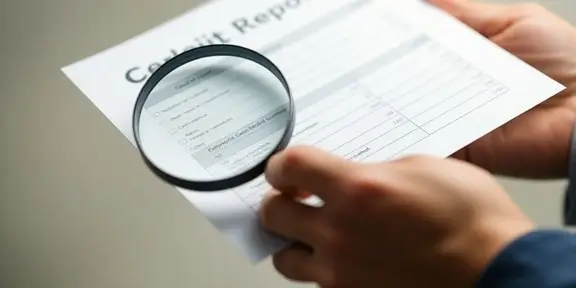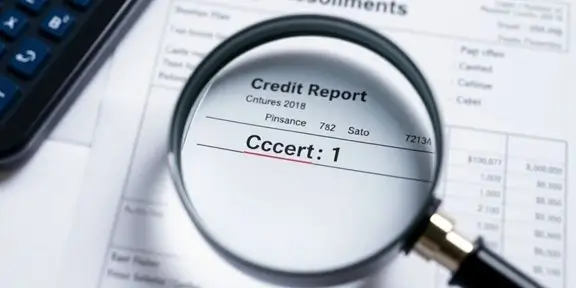


Your credit report is a detailed record of your financial history. It shows how you've managed credit over time, including loans, credit cards, and payment history. Lenders and other businesses use this information to assess your creditworthiness. It's important to know that inaccuracies on your credit report can significantly impact your ability to get loans, rent an apartment, or even secure certain jobs.
Working with experts who can help you dispute inaccurate credit items, such as those at Credit Shogun, ensures that errors are addressed properly so your report reflects your true financial standing. Regularly checking your credit report is a smart move to make sure everything is correct.
Errors on a credit report can pop up in several ways. Sometimes, personal information might be wrong, like an incorrect address or phone number. This can lead to accounts belonging to someone else being mixed into your report, a problem often called a "mixed file." Other common mistakes include accounts being listed as open when they've been closed, or payments being marked as late when they were actually made on time. Incorrect balances or credit limits on accounts also happen. It's vital to spot these issues.
Identity theft can leave a serious mark on your credit report. Look out for accounts you don't recognize, inquiries from lenders you never applied to, or any mention of legal actions or bankruptcies that aren't yours. A sudden drop in your credit score without a clear reason is also a red flag. If you see any of these signs, it's a strong indicator that someone might be using your personal information without your permission. This is a serious issue that needs immediate attention.
Negative information, like late payments or defaults, typically stays on your credit report for a set period. For example, late payments usually remain for seven years from the date of the delinquency. Bankruptcies can stay for seven to ten years, depending on the type. While this information does eventually fall off, it can significantly affect your credit score during that time. Understanding these timelines helps you know when to expect such items to be removed automatically.

Finding an error on your credit report can be frustrating, but taking action is straightforward. The first step involves initiating a dispute with the credit reporting agencies themselves. These agencies, Equifax, Experian, and TransUnion, are responsible for maintaining your credit history.
It's important to be thorough when you dispute an item. Clearly state what you believe is incorrect and why. Providing documentation to back up your claim is also key. Think of it as presenting your case; the more evidence you have, the stronger your position.
Remember, you have the right to dispute information you believe is inaccurate. This process is designed to correct errors and ensure your credit report accurately reflects your financial standing.
When you find a mistake, your primary action is to dispute it directly with the credit reporting agencies. You can do this online, by mail, or sometimes over the phone. Each agency has specific procedures, so it's wise to check their websites for the most current instructions.
When you dispute, be specific. List each error you want corrected and explain your reasoning. Sending copies of supporting documents, like billing statements or canceled checks, is highly recommended.
Keep records of all your communications. This includes copies of your dispute letters and any receipts for mail you send. This documentation is vital if further action is needed.
Beyond disputing with the credit bureaus, you can also contact the company that originally provided the information. This is often the lender or creditor. They have a responsibility to investigate your claim.
If you choose this route, send a written request to the information provider. Include your account details and explain the error. Again, attach copies of any proof you have.
This direct approach can sometimes resolve issues more quickly. If the provider confirms the error, they will update the credit reporting agencies.
There are several ways to submit your dispute. Mailing a letter via certified mail with a return receipt requested is a solid method. This gives you proof of delivery.
Many agencies also offer online dispute portals. These can be convenient and allow for easy uploading of documents. Phone disputes are also an option, though a written record is always best.
Regardless of the method, always keep copies of everything you send. This ensures you have a complete record of your dispute.
Always keep copies of your dispute letter and the documents you send with it.
When you write a dispute letter, make sure to include all your personal contact details. This means your full name, current address, and phone number. Also, clearly state which specific items on your credit report you believe are wrong. For each error, explain precisely why you think it's inaccurate. Providing a clear reason for your dispute is key.
Gather copies of any documents that back up your claim. This could be bills, statements, or other official papers. Don't send originals; always keep those for yourself. A copy of the credit report itself, with the disputed items highlighted, can also be very helpful. This documentation helps the credit bureaus and the information providers understand your side.
To make sure your dispute letter gets there and to have proof, send it using certified mail with a return receipt requested. This way, you'll get a confirmation that the letter was received. Keep a copy of the letter and the receipt for your records. This step is important for tracking your dispute and having evidence if needed later. It’s a good practice when dealing with any official correspondence.
Once you submit a dispute, the credit reporting agencies have a set timeframe to look into it. Generally, this investigation period is 30 days. They might extend this by another 15 days if you send them more information later in the process. It's important to know that if they deem your dispute frivolous or irrelevant, they can stop the investigation, but they must tell you why.
The credit bureau doesn't just take your word for it. They forward your dispute and all the supporting documents you provided to the company that originally reported the information. This company then has to check their records to see if the information is indeed accurate. If they find an error, they must correct it and inform the credit bureau. This verification step is key to fixing your report.
After the investigation is complete, the credit bureau will send you the results in writing. If the dispute led to any changes on your credit report, they'll also send you a free updated copy. This isn't your regular annual free report; it's specifically tied to the dispute resolution. It's good practice to review this updated report carefully to confirm the corrections were made.
Remember, the credit bureau must notify you of their findings. If they decide not to investigate, they have to explain their reasoning within five business days.
Here's a quick look at what happens:
If the investigation doesn't resolve your dispute to your satisfaction, you have further options. You can request that a statement explaining your side of the story be added to your credit file. This statement will then be included with any future credit reports issued. You can also ask the credit bureau to send this statement to anyone who has received your report recently, though there might be a fee for this service. This ensures that anyone reviewing your credit history is aware of the ongoing dispute.

If the credit bureau or the information provider doesn't fix the error, you still have options. You can ask for a statement of up to 100 words to be added to your credit file. This statement explains your side of the story regarding the disputed item. It's a way to provide context for anyone reviewing your credit report in the future.
This statement becomes part of your permanent credit record. It’s important to be clear and concise in your statement, focusing on the facts of the dispute. Remember, this is your chance to present your case directly on your report.
When a correction is made to your credit report due to a dispute, you can request that the credit bureau notify anyone who received your report in the past six months. For employment purposes, this notification period extends to two years. This ensures that anyone who previously received an inaccurate report is updated with the correct information.
There might be a small fee associated with this service, but it's a good way to make sure all parties who saw the incorrect data are aware of the changes. This step helps prevent any lingering issues from the original error.
If you’ve exhausted other avenues and your dispute remains unresolved, consider filing a complaint with a consumer protection agency. The Federal Trade Commission (FTC) is a primary agency for reporting issues like credit report errors and identity theft.
These agencies can investigate your case and may take action against companies that violate consumer protection laws. Filing a complaint is a serious step that can prompt further review of the company's practices. It’s a good idea to gather all your documentation before submitting a complaint to these agencies. This helps them understand the situation better and act accordingly.
After you've gone through the dispute process, it's really important to check your credit report again. You want to make sure the changes you asked for actually happened. Sometimes, mistakes can still slip through, or maybe the correction wasn't quite right. It's a good idea to get a fresh copy of your report from each of the major credit bureaus – Experian, Equifax, and TransUnion – a few weeks after you expect the dispute to be resolved. Look closely at the specific items you disputed. Did they get removed? Were they updated correctly? This step is key to monitoring your credit and confirming the accuracy of your file.
If the credit reporting agency or the information provider couldn't verify the disputed item or agreed it was inaccurate, they should have corrected it. But what if they didn't fully resolve your issue, or if you still feel something isn't quite right? You have the right to add a statement to your credit file explaining your side of the story. This statement will then be included with your credit report whenever it's accessed. It's a way to provide context and ensure anyone reviewing your credit knows about the dispute. Make sure this statement is added if the issue wasn't fully cleared up.
Don't just rely on one check. It's wise to periodically obtain updated credit reports, especially after a dispute. This helps you keep an eye on your credit health over time. You can get a free credit report from each of the three main bureaus annually through AnnualCreditReport.com. However, if you've had a dispute resolved, you might want to check sooner. Confirming that all inaccuracies have been removed and that your credit report accurately reflects your financial history is the goal. This ongoing monitoring is a smart move for anyone who has dealt with credit report errors.
So, keeping an eye on your credit report and fixing any mistakes is a pretty big deal. It’s not just about getting a loan; it affects a lot of things. If you find something wrong, don't just let it slide. Take the time to dispute it with the credit bureaus and the companies that sent the information. It might take a little effort, but getting your credit report accurate puts you in a much better spot. Remember to keep copies of everything you send and follow up. It’s your financial picture, after all, and you have the right to make sure it’s correct.